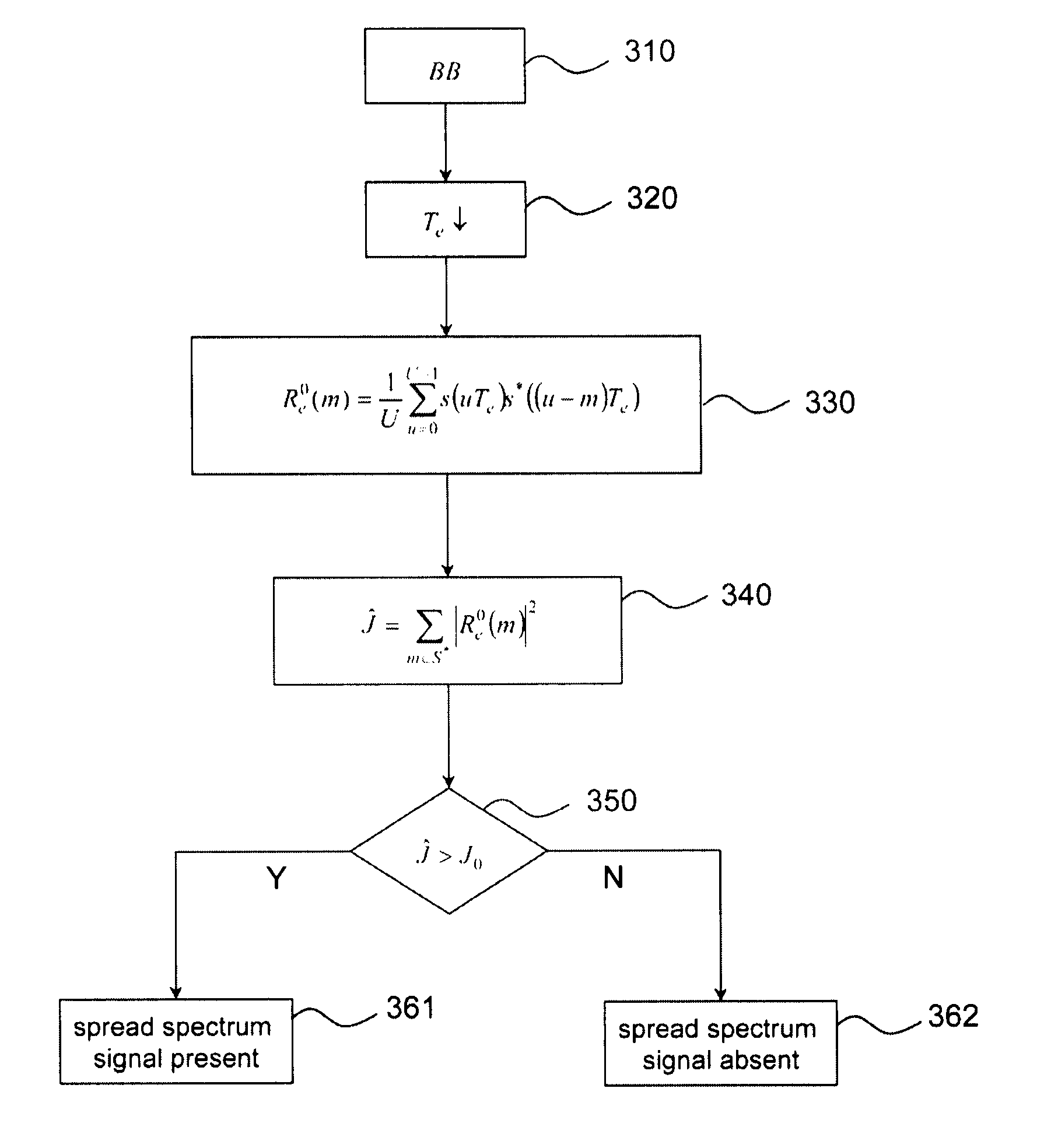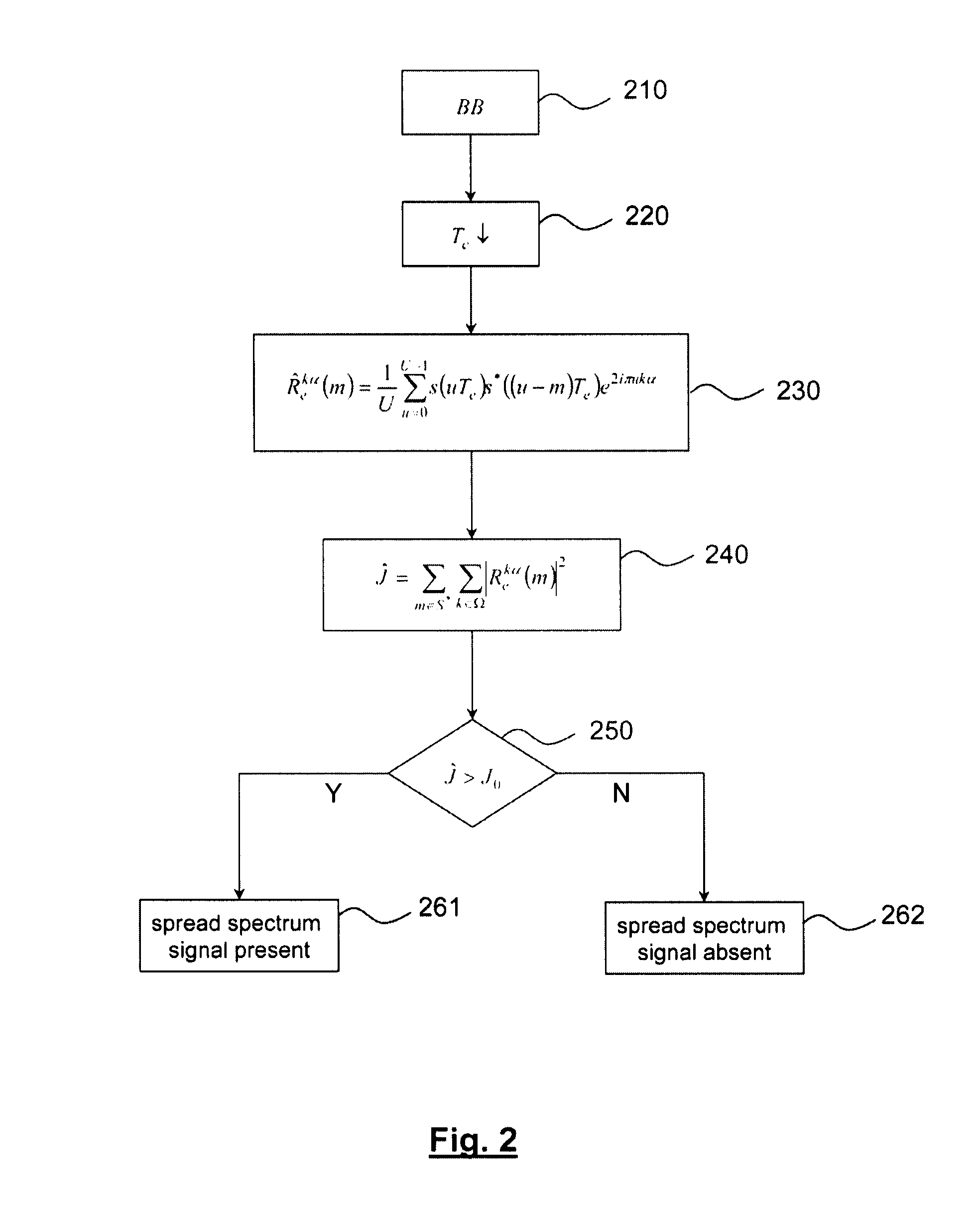Method for detecting the presence of spread spectrum signals
a spread spectrum and signal detection technology, applied in the field of blind or semiblind detection of spread spectrum signals, can solve the problems of not being able to obtain this information reliably, and not being able to determine with a low error rate whether a spread spectrum signal is absen
- Summary
- Abstract
- Description
- Claims
- Application Information
AI Technical Summary
Benefits of technology
Problems solved by technology
Method used
Image
Examples
first embodiment
[0037]This first embodiment finds application in the context of semi-blind estimation where the value α is known a priori, and therefore the values of the cyclic frequencies. This will notably be the case if the chip period Tc of the spread signal and the length L of the spreading sequences are known to the terminal. In this case, the energy J is then estimated by:
J^=∑m≠0∑k1U∑u=0U-1s(uTe)s*((u-m)Te)2πukTeLTc2(9)
[0038]It will be noted that this estimation tends to the value of J given by the expression (5) when U is sufficiently large.
[0039]According to a second alternative embodiment of the invention, the characteristics of the spreading sequences are not known a priori to the terminal. In this case, the energy of the autocorrelation function is simply estimated in a blind way from the cyclic correlation coefficient at zero frequency, i.e.:
J^=∑m≠0Re0(m)2=∑m≠01U∑u=0U-1s(uTe)s*((u-m)Te)2(10)
[0040]FIG. 2 illustrates the flowchart of a semi-blind method for detecting the presence of a s...
second embodiment
[0051]FIG. 3 illustrates the flowchart of a blind detection method for the presence of a spread spectrum signal in a spectral band of interest, according to the invention.
[0052]In step 310, the received signal is filtered in the band of interest and is translated into the base band.
[0053]In step 320, the obtained signal is sampled at the Nyquist frequency.
[0054]In 330, the cyclic correlation coefficient Re0(m) is estimated.
[0055]In 340, the energy of the autocorrelation function is estimated from expression (10). In practice, as for the first embodiment, the summation over the time shift values is limited to a bounded support S* which may have the same forms as earlier.
[0056]Eventually, the energy Ĵ is then obtained by:
J^=∑m∈S*1U∑u=0U-1s(uTe)s*((u-m)Te)2(13)
[0057]In 350, the value Ĵ is compared with a threshold value J0, determined as for the first embodiment (with card(Ω)=1) .
[0058]If Ĵ>J0, it is concluded in 361 that a spread spectrum signal is present in the band of interest, and...
PUM
 Login to View More
Login to View More Abstract
Description
Claims
Application Information
 Login to View More
Login to View More - R&D
- Intellectual Property
- Life Sciences
- Materials
- Tech Scout
- Unparalleled Data Quality
- Higher Quality Content
- 60% Fewer Hallucinations
Browse by: Latest US Patents, China's latest patents, Technical Efficacy Thesaurus, Application Domain, Technology Topic, Popular Technical Reports.
© 2025 PatSnap. All rights reserved.Legal|Privacy policy|Modern Slavery Act Transparency Statement|Sitemap|About US| Contact US: help@patsnap.com



